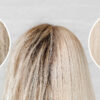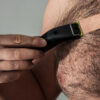Soft, beautiful shiny and strong hair is the dream of many people. Both atmospheric factors, improper care and genetic conditions contribute to the weakening of hair follicles and hair loss. Fortunately, with help comes care by means of oiling. This is a practice that has been known for hundreds of years. This hair care trend used regularly significantly improves the condition of hair and makes it more resistant to damage.
Is it worth it to oil your hair?
Hair is the hallmark of any person. It is very important to take special care of them, and one of the nurturing steps you should do regularly is oiling. This traditional method was used as early as by Hindu women and women of ancient Egypt to protect their hair from the sun’s harmful rays.
Oiling hair is the application of natural oils to the hair. Regularly performed treatment stands out for its many advantages. The oil protects hair strands from high moisture loss. It also helps them to style naturally and gives them a beautiful shine. However, do not be afraid that through this technique your hair will start to get oily faster. Oiling is also designed to regulate sebum production.
Systematic oiling contributes to strengthening the roots and accelerates hair growth. This is one of the more effective techniques in the fight against dandruff, skin irritation and inflammation. After the oil treatment, the hair detangles more easily, is soft, bouncy and regenerated. In addition to the visible benefits, such a home ritual is also a great way to improve your mood.
What to oil your hair with?
Oiling hair can seem like a complicated process at first. In fact, however, it is a simple treatment. The first step is to choose the right oil. An ill-fitting one can weigh hair down, make it greasy or cause it to become excessively frizzy.
Oil should be selected for the porosity of the hair, which determines how the hair’s scales deviate. There is a division into three types of porosity – low, medium and high. One technique to find out the porosity of your hair is to pour water into a glass, drop a hair into it and watch how it behaves. Hair that sinks to the bottom in a rapid manner means that the hair is highly porous. A hair distinguished by low porosity will stay on the surface, while one with medium porosity will be in between.
Low-porous hair is characterized by closed scales, smooth and shiny texture. This is the type of hair that causes the least problems in terms of care. Low-porous hair is usually distinguished by its thickness and stiffness. As a result, they are more difficult to style. Proper care of this type of hair is based on the effect of increasing volume and bouncing the hair from the roots. This type of hair will like saturated oils. So it is worth choosing flaxseed oil, castor oil, sunflower oil, coconut oil, shea butter and babassu oil.
Highly porous hair is distinguished by deflected scales, more dull and sensitized. The opening of the scales makes the hair susceptible to external influences and temperature. They tend to be brittle, rough and brittle. They are characterized by significant dryness at the end or from the middle of their length. They also tend to fluff up when exposed to humid air. For highly porous hair, polyunsaturated oils are recommended, including. Linseed oil, hemp oil, pumpkin seed oil, walnut oil and cumin oil.
Medium-porous hair, on the other hand, has gently tilted scales. Hair is fine and thin with a tendency to static, wavy and frizzy when exposed to moisture. They are also susceptible to styling. They require reconstruction, strengthening and protection. For medium-porous hair, monounsaturated oils will be best. Olive oil, sunflower oil, castor oil, sesame oil, sweet almond oil, canola oil and argan oil, for example, will work. Do a online porosity test on your hair.
How do you oil your hair?
There is no one-size-fits-all method that tells you how to oil your hair the correct way. There are a number of ways that will not work equally well for everyone. The first step to success is to constantly try, test and modify to eventually find a favorite technique. Oiling the hair can be done by applying the ingredients to the entire length including the scalp, from ear to tip, or by applying oil only to the very ends. It is worth testing each way and choosing the one that suits you best.
Dry oiling hair is one of the simpler techniques that most women start the process with. Its plus point is that it is very easy to see which parts of the hair have been coated with oil. To perform such a treatment, spread 2 -3 tablespoons of the selected oil in the palms of your hands, and then spread it on the strands. The oil is applied to unwashed hair. However, they should not be loaded with styling cosmetics.
Wet oiling, on the other hand, is a method in which oil is applied evenly to damp strands of hair. Lightly drain the hair of excess water with a cotton towel. Hair dripping with water will make it dilute the oil, which will lose its properties.
Oiling the hair with a hydrolate or mist is a technique similar to that carried out wet. Hair strands need to be sprayed with your favorite product beforehand, and then apply the oil on them, spreading it thoroughly. The hydrolate provides protection against significant stress on the hair.
Oil-on-conditioning, on the other hand, involves applying oil to dry or damp hair and then using conditioner. You can also perform this activity in reverse order. For this purpose, initially a conditioner is used, and later an oil. The third solution is to mix the products and apply the whole thing to the hair.
Bowl oiling requires pouring a small amount of the chosen oil into the bowl. Then dip the hair in the concoction for a minute or two. This way the oil will be evenly deposited on the hair and thoroughly cover it.
How do I wash off the oil and how often do I oil my hair?
Optimal therapy is recommended to be performed 1 – 2 times a week. Regularity is very important, because only then can you see results. Dry and damaged hair needs more attention. For healthy hair, on the other hand, it does not need to be oiled as often.
Washing off the product after 10 – 15 minutes will have no effect. It takes time for the oil to get into the hair follicles. The issue of keeping oil on the hair is as individual as the frequency of oiling. You can keep the oil on the whole hair for up to a couple of hours. If oiling the scalp, wash off the oil after 1 – 2 hours. In order to speed up the effect of the product, it is a good idea to put a foil cap or cap on your head. As a result of the high temperature, the oil will work much faster.
Combining oil with a conditioner application is the best way to wash substances out of the hair. To do this, you start by rinsing the oil with plenty of warm water. An emollient conditioner is then applied to the hair and the product is gently massaged or brushed into the hair. After a few minutes, the hair is rinsed with warm water.
What mistakes to avoid when oiling?
During oiling, as with any other activity, mistakes can happen, which will affect the lack of positive results and can even worsen the condition of the hair. Some of the most common include:
- Choosing the wrong oil – the right oil is essential to reap the benefits of a particular treatment. It is worth doing a porosity test on your hair and choosing the right oil.
- Applying the wrong amount of oil – at the beginning, apply oil especially – not too little and not too much. The wrong application can result in the final need to wash the hair 2 – 3 times, spend too much time caring for it, and the results will not be visible.
- Lack of regularity – in order for oiling to produce results, it must be done systematically. Irregular use of oil will ensure that you do not get spectacular results.





